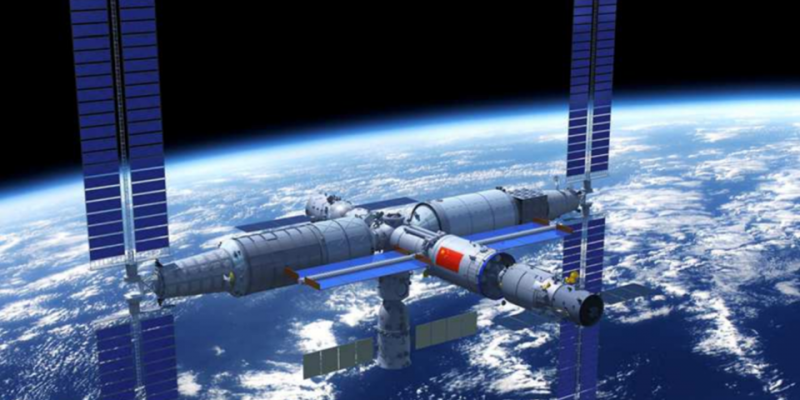
China launched the first module of its permanent space station in low-earth orbit from the Wenchang Satellite launch center, on the island of Hainan. Giving the international Space station a neighbor.
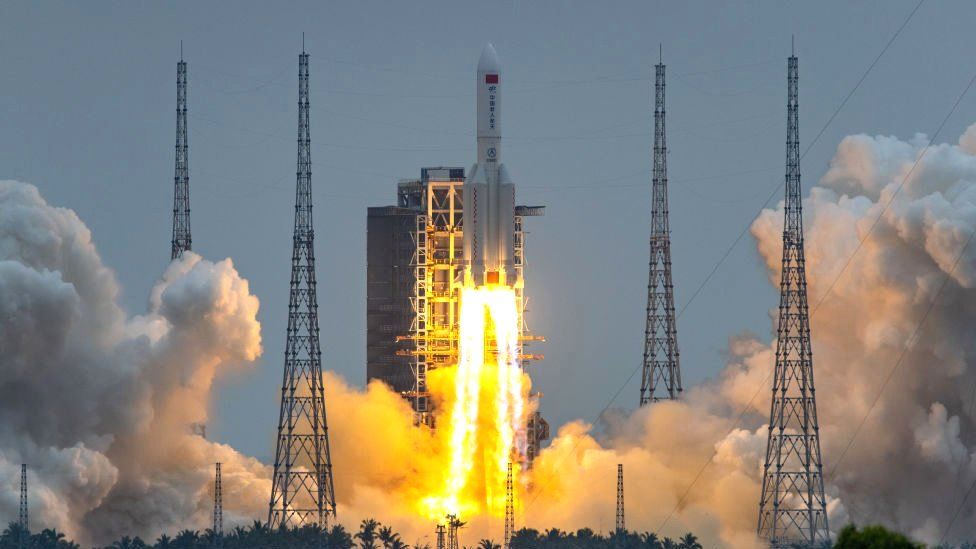
Launching of China’s first module of its Space Station. (Image Credit: BBC)
Also, it’s chipping away at a tight cutoff time because once that rocket takes off, the commencement starts. That’s because the space agency hopes to finish the station by 2022, marking an ambitious plan to push the boundaries of the country’s human space flight program.
China is no more peculiar to building space stations and this most recent endeavor will be its third one. The nation has dispatched two past exploratory space research centers: Tiangong-1 and Tiangong-2. Meaning “heavenly castle”, Tiangong-1 was the country’s first- permanent model space station that was dispatched in 2011.

Tiangong-1 (Image Credit: New Scientist)
The space station was in orbit for a couple of years and surprisingly had various visits from Chinese space travelers known as taikonauts until CMSA lost contact with it after a specialized issue in 2016. In the end, Tiangong-1 needed to descend, however, nobody knew precisely where it would land. Fortunately for everybody, it reappeared over the Pacific Ocean in the spring of 2018.
Their subsequent endeavor, Tiangong-2 was more effective, as it far outperformed its arranged two-year life expectancy. It was then purposely deorbited in 2019 after giving the researchers the information they required. In any case, presently it’s the ideal opportunity for another space station and it starts with the dispatch of the principal module, Tianhe-1. This center segment is the most pivotal part.
It’s the main living space for up to three astronauts for a stay of about six months. On top of that, the module will also provide the propulsion and powerful element of the station. And while Tianhe-1 is that the first module to launch, it won’t be the last, as it’s a part of a multi-module space platform design.
The other components are meant for conducting science experiments in microgravity. But to complete the station, an additional 11 flights are planned throughout 2022. And well, that’s already much less than the more than 30 missions it took to build the ISS over a decade. So, Talk about crunch time.
Now, as for its ride, Tianhe-1 was launched on a Long March 5B rocket. It’s China’s latest version of its most powerful rocket, the Long March 5, and may carry up to 25 metric plenty of cargo into low-earth orbit.
Remaining at approximately 53 meters tall, the rocket is a pivotal point for china’s space program as it is used explicitly to pull a large number of components of its space station. So to launch these payloads, the rocket produces roughly 10,600 KN of thrust, that’s thanks to the rocket’s two core engines powered by cryogenic liquid hydrogen and four strapon boosters.
But what’s unique about the Long March 5B rocket is that it doesn’t have a second stage. So during launch, the rocket’s four strapon boosters are the ones that provide most of the thrust at liftoff. After those engines detach, the core’s main engine pushes the cargo into orbit for payload separation. And because the rocket doesn’t have to reignite engines that mean that the core will eventually re-enter the atmosphere and wait for it uncontrollably.
So, what does the Tianhe-1 of China’s space station look like?
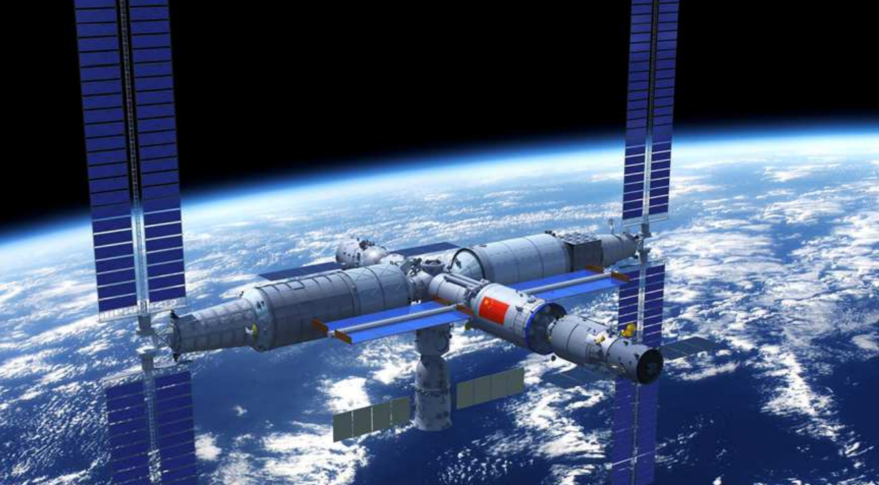
Tianhe-1 of China’s Space Station (Image Credit: SpaceWatch.Global)
The Tianhe module is about 19 m long and 4.2 m in width and developed of 5A06 aluminum-compound, with a gross mass of 22,000 kg. The whole module is separated into three areas:
- Front docking
- The compressed living compartment
- Rearward help compartment
The module has an aggregate of five inactive APAS-type docking ports—four situated on the front docking center and one on the backside of the help compartment. Remotely the module mounts a mechanical arm, two sets of sun-based board wings, and docking radar/optical sensors.
The circular docking center situated at the front finish of the Tianhe center module gives four docking ports: two sidelong ports utilized as lasting connection focuses for the two research facility modules, Wentian and Mengtian, and an Earth-confronting port as the reinforcement mooring for Shenzhou shuttle.
The leftover port on the center point confronting away from the Earth is permanently attached to a little airtight chamber module, which permits departure and entrance for spacewalks by space travelers and gives an extra room to oblige EVA spacesuits.
The tube-shaped living compartment gives livable living quarters and primary working space for a team of three space explorers, including resting quarters, kitchen, toilet, and so on. An auxiliary control station that performs comparable capacities is situated in the Wentian lab module.
The progress segment behind the living compartment flares outward from 3.35 m distance across the living compartment to 4.2 m measurement of the help compartment.
The chamber is encircled by the unpressurized administration compartment, which obliges the principle motors, force tanks, power framework, and an interchanges framework. The rearward docking ports are used for docking the Tianzhou payload rocket. However, it can also be used as a reinforcement docking port for the Shenzhou shuttle.
The Tianhe module is controlled by two sets of sun-based board wings, with a range of 60 m. Each sun-based wing has 3 boards and is one-pivot steerable to get the sunlight-based insolation. The silicon sun-based cells of the clusters have proficiency of more than 30%.
Sun sensors between the boards measure the daylight occurrence point which permits the boards to be naturally directed to an ideal point. Silver-zinc batteries in the help compartment give crisis power if there should arise an occurrence of disappointment of the sunlight-based exhibits.
Suggested Reading: Why SpaceX launched four astronauts to the ISS?
Author
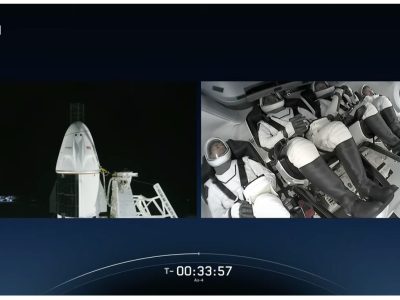
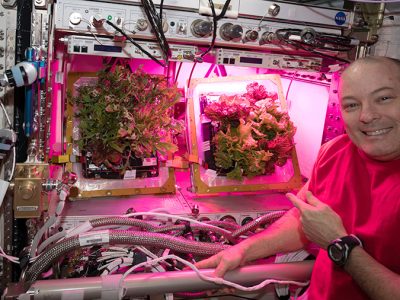


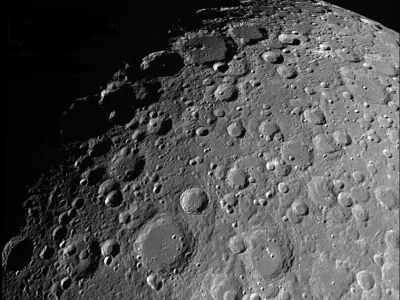








[…] Suggested Reading: China’s permanent space station-A rival for the ISS? […]